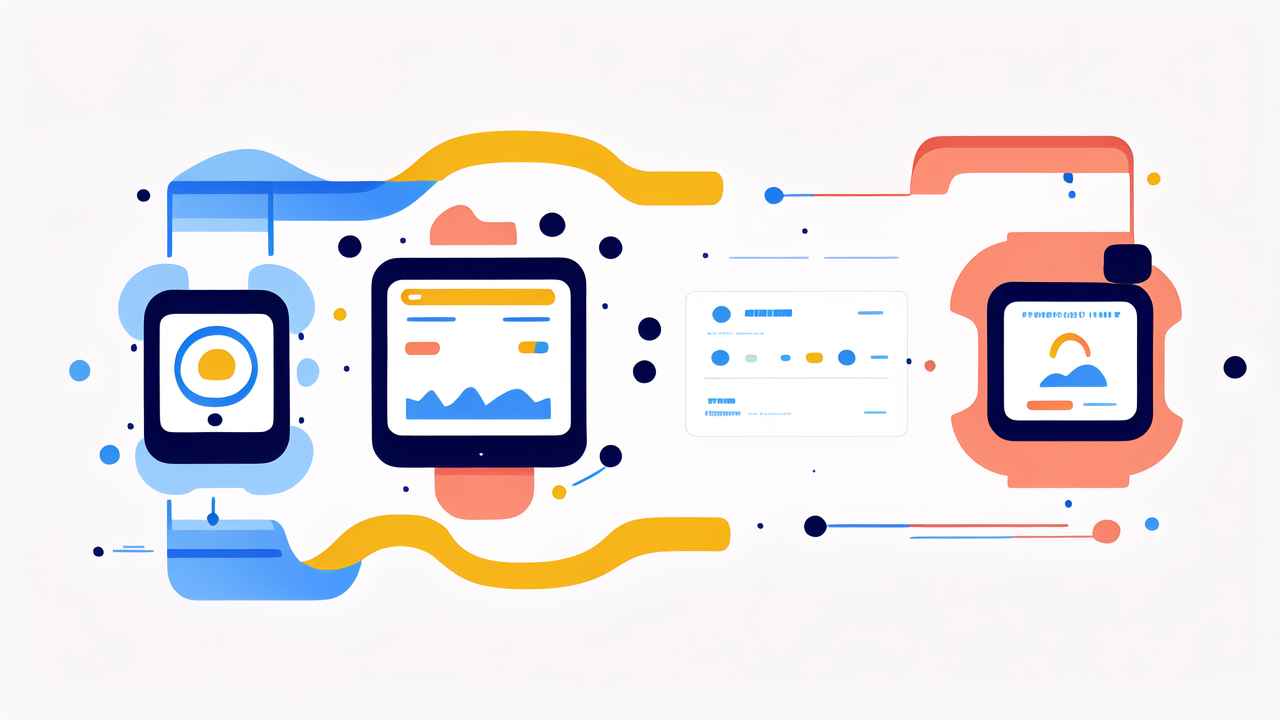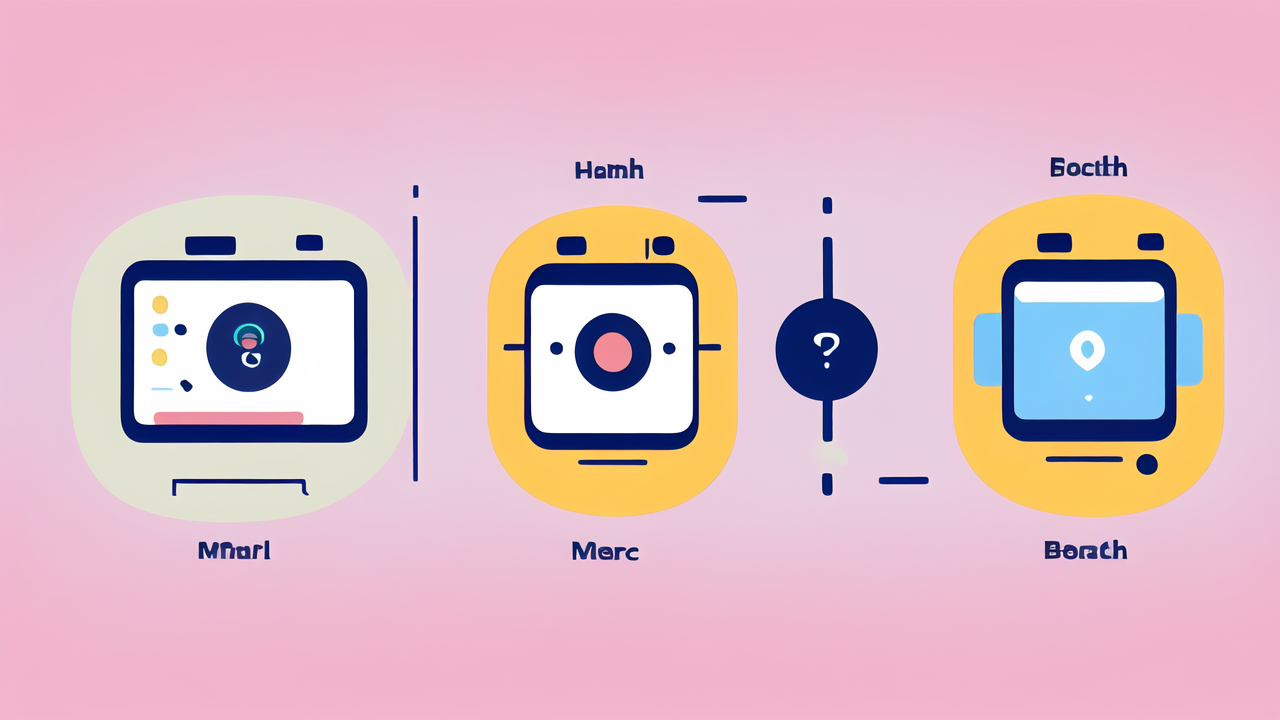The Evolution of Health Monitoring in Wearables
The inception of smartwatch health features
Smartwatch health features began with basic step counting and heart rate monitoring. Early models used simple sensors to track movement and pulse. These initial features laid the foundation for more advanced health monitoring.

As technology improved, smartwatches gained more sophisticated sensors. This allowed for more accurate data collection. Manufacturers began to focus on health and fitness as key selling points. This shift marked the beginning of smartwatches as health devices, not just accessories.
The integration of GPS was a major milestone. It enabled more precise tracking of outdoor activities. This feature appealed to runners and cyclists, expanding the smartwatch market. Early adopters embraced these new capabilities, driving further innovation in the field.
Key advancements in smartwatch health monitoring
Significant advancements have shaped modern smartwatch health monitoring. The introduction of ECG (electrocardiogram) features was a game-changer. It allowed users to detect irregular heart rhythms, a potential sign of serious conditions.
Blood oxygen monitoring became another crucial feature. This tool gained importance during the COVID-19 pandemic. It helps users track their respiratory health and overall wellness. Sleep tracking also evolved, offering detailed insights into sleep patterns and quality.
Stress monitoring through heart rate variability analysis emerged as a novel feature. It helps users manage their mental health and well-being. Fall detection was introduced, providing a safety net for elderly or vulnerable users. These advancements transformed smartwatches into comprehensive health monitoring devices.
Comparing past and present smartwatch health capabilities
The contrast between past and present smartwatch capabilities is stark. Early models offered basic step counting and heart rate monitoring. Today's devices provide a wealth of health data and insights. The accuracy and reliability of measurements have improved significantly.
Modern smartwatches can track multiple health metrics simultaneously. They offer real-time data and long-term trend analysis. This level of insight was unimaginable in early smartwatch models. The integration with smartphones and health apps has also enhanced data interpretation and sharing.
Current smartwatches can detect potential health issues and prompt users to seek medical advice. This proactive approach to health monitoring was absent in earlier models. The evolution from simple fitness trackers to comprehensive health devices has been rapid and transformative.
Current State of Health Monitoring in Smartwatches
The landscape of health monitoring features in today's smartwatches
Today's smartwatches offer a wide array of health monitoring features. These include:

- Heart rate monitoring
- ECG (electrocardiogram)
- Blood oxygen saturation (SpO2) measurement
- Sleep tracking
- Stress monitoring
- Menstrual cycle tracking
- Fall detection
- Noise level monitoring
Many devices also track specific activities like running, swimming, and cycling. They provide detailed metrics such as pace, distance, and calories burned. Some advanced models offer skin temperature sensing and even blood glucose monitoring.
The accuracy of these features has improved significantly. Many smartwatches now offer medical-grade measurements. This makes them valuable tools for both general wellness and specific health condition management.
How smartwatches are changing the health monitoring landscape
Smartwatches are revolutionizing personal health monitoring. They provide continuous, non-invasive data collection. This allows users to track their health trends over time. The ease of use and accessibility make health monitoring more approachable for many people.
These devices are also changing how people interact with healthcare providers. Users can share their health data directly with doctors. This facilitates more informed discussions and personalized treatment plans. Some health insurance companies now offer incentives for smartwatch use, promoting preventive health measures.
Smartwatches are also playing a role in medical research. Large-scale studies use data from these devices to gain insights into population health trends. This wealth of real-world data is invaluable for researchers and healthcare professionals.
The integration of AI and Machine Learning in smartwatch health monitoring
Artificial Intelligence (AI) and Machine Learning (ML) are enhancing smartwatch capabilities. These technologies improve data analysis and interpretation. They can detect patterns and anomalies that might indicate health issues. This allows for early intervention and preventive care.
AI algorithms can provide personalized health recommendations based on user data. They can suggest lifestyle changes or prompt users to seek medical advice when necessary. ML models are constantly improving, learning from vast amounts of user data to increase accuracy.
Some smartwatches now use AI to detect atrial fibrillation, a common heart rhythm disorder. Others can predict the onset of conditions like diabetes or hypertension. As these technologies advance, smartwatches will become even more powerful health monitoring tools.
Future Directions and Trends in Health Monitoring for Smartwatches
The potential of advanced sensor technology in smartwatches
The future of smartwatch health monitoring lies in advanced sensor technology. Researchers are developing new sensors that can measure a wider range of health metrics. These include:

- Non-invasive blood glucose monitoring
- Blood pressure measurement
- Hydration level sensing
- Continuous core body temperature monitoring
These advancements could revolutionize the management of chronic conditions like diabetes and hypertension. They would allow for more frequent and convenient monitoring without the need for invasive procedures.
Miniaturization of sensors is another key trend. This will enable smartwatches to pack more features into smaller, more comfortable designs. Improved battery technology will support these advanced sensors, allowing for longer periods of continuous monitoring.
The intersection of smartwatches and the Healthcare Industry
Smartwatches are increasingly integrated into formal healthcare systems. Many hospitals and clinics now accept smartwatch data as part of patient records. This trend is likely to grow, with smartwatches becoming key tools in telemedicine and remote patient monitoring.
Healthcare providers are developing custom apps for smartwatches. These apps can help manage specific conditions or support post-operative care. Insurance companies are also showing interest, potentially offering lower premiums for users who maintain healthy lifestyles as monitored by smartwatches.
The FDA has already approved several smartwatch features for medical use. This trend is expected to continue, with more smartwatch capabilities gaining medical-grade certification. This will further blur the line between consumer devices and medical equipment.
Emerging trends in smartwatch health monitoring technology
Several exciting trends are emerging in smartwatch health monitoring technology. One is the development of sweat analysis sensors. These could provide insights into electrolyte balance and even detect certain diseases.
Another trend is the integration of mental health monitoring. Future smartwatches may be able to detect stress, anxiety, and depression through a combination of physiological and behavioral data. This could revolutionize mental health care and support.
Personalized health AI is another emerging trend. Future smartwatches may use AI to create highly individualized health profiles and recommendations. This could include personalized exercise plans, nutrition advice, and early warning systems for health issues.
As these technologies develop, smartwatches will become even more integral to our health and wellness management. They will continue to bridge the gap between consumer technology and professional healthcare, empowering users to take control of their health in new and exciting ways.




Leave a comment
This site is protected by hCaptcha and the hCaptcha Privacy Policy and Terms of Service apply.